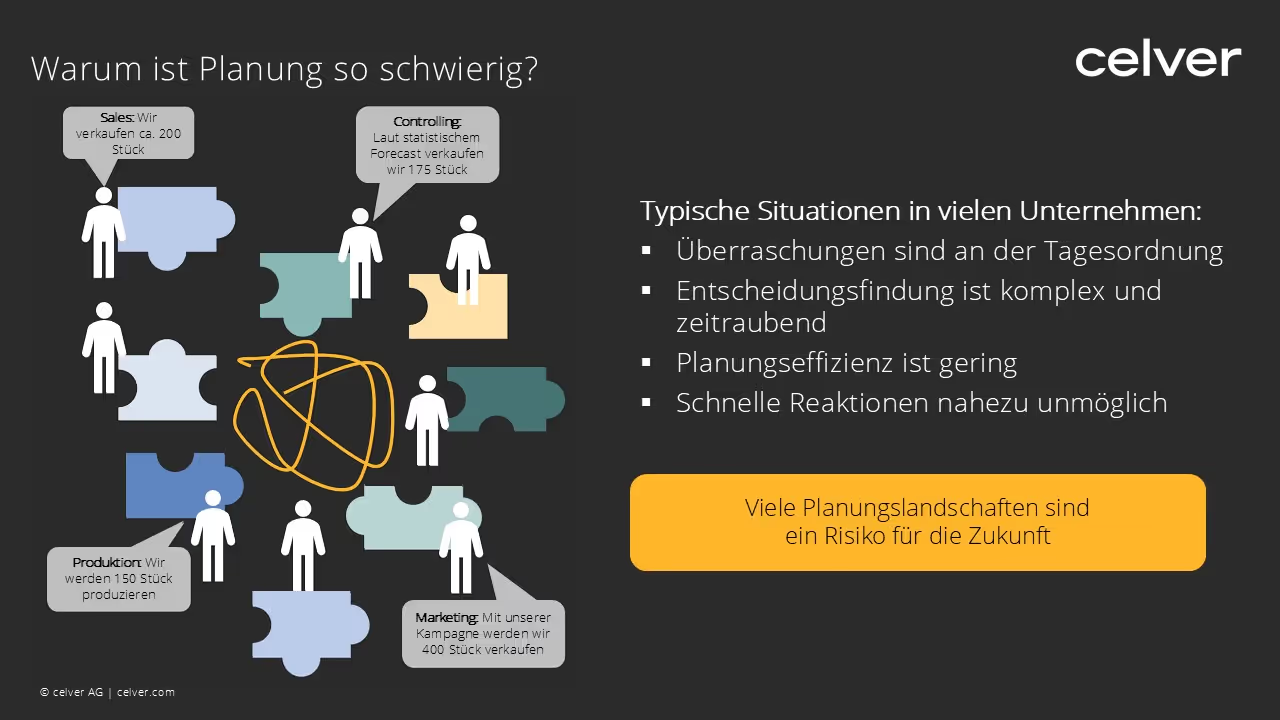Competitive advantage through integrated end-to-end planning with SAP


With xP&A you can transform your planning into a real competitive advantage.
They create transparency across all areas of the company and react more quickly to changes.
In an increasingly dynamic and data-driven business world, the quality of planning determines a company's success. Those who plan faster, more networked and with more foresight will gain a clear advantage. Extended Planning & Analysis(xP&A) is the key to this: It combines financial planning with operational areas such as sales, HR, production and supply chain - for holistic, agile and strategically oriented management.
The advantages of an integrated solution at a glance:
1. cross-departmental integration
Bring all relevant departments onto a common planning platform - for consistent data, coordinated targets and better decisions.
2. end-to-end transparency
Link strategic and operational planning in one end-to-end process - from target definition to implementation.
3. Agility and scenario planning
Respond flexibly to market changes with real-time data and dynamic forecasts.
4. Efficiency through automation
Reduce manual processes and increase productivity through automated workflows and intelligent analyses.
With xP&A and SAP, you create the basis for modern, networked and future-proof corporate management. Let's transform your planning together.
The central challenges
We will show you how the xP&A concept can be implemented with the SAP solutions SAC, IBP and BDC. We will highlight both the advantages and possible challenges with regard to the required data and its exchange between the systems. The challenges can be roughly divided into the following three areas:
Financial planning
Financial planning plays a central role: it forms the controlling backbone of integrated corporate planning. As the connecting element between strategic goals and operational measures, financial planning ensures that all departments are aligned with common financial guidelines. It provides the necessary key figures, budgets and forecasts to make fact-based decisions that are consistent throughout the company. At the same time, it must be open and networked in the xP&A context, which places new demands on data integration, flexibility and real-time capability.
Sales & Operations Planning (S&OP)
Operational departments such as sales, production, marketing, HR and supply chain play a decisive role as drivers of planning. They provide the business-relevant input variables that have a direct impact on the financial targets - such as sales forecasts, capacity requirements, personnel development or campaign budgets. Their integration ensures that planning is not only financially oriented, but also realistic and feasible. At the same time, a new responsibility arises: the specialist departments must provide their data in a structured manner, be actively involved in planning processes and work closely with the finance department.
Data and system integration
Integrated planning is a considerable challenge for IT: it must connect heterogeneous systems and data sources, create interfaces and at the same time ensure security, scalability and performance - ideally in real time and with a high level of user-friendliness. Particularly in complex ERP landscapes, this can only be achieved with a clear architecture and modern cloud-based solutions such as the SAP Business Data Cloud (BDC).
Next Steps
xP&A is complex. This raises the question of how best to approach this topic. We have various predefined offers in our portfolio to help you with this. You can get an initial insight here - you can find more options in our store.
Contact





-min.avif)
.avif)






